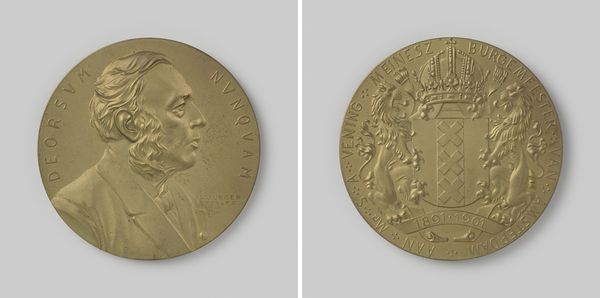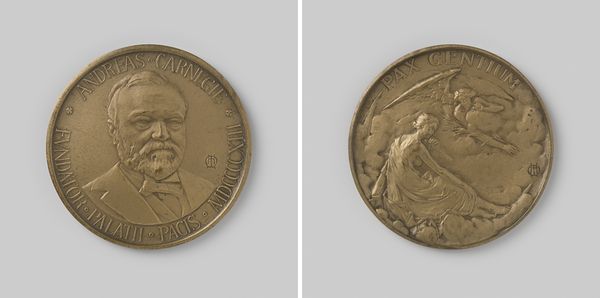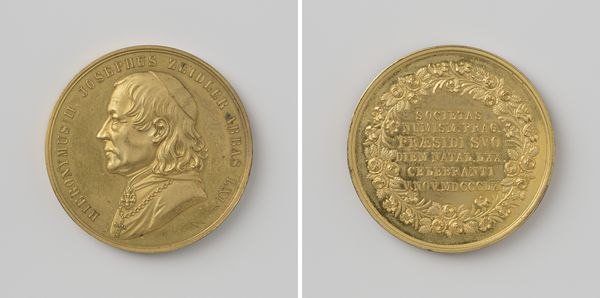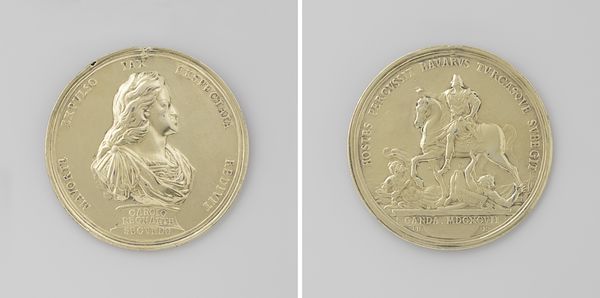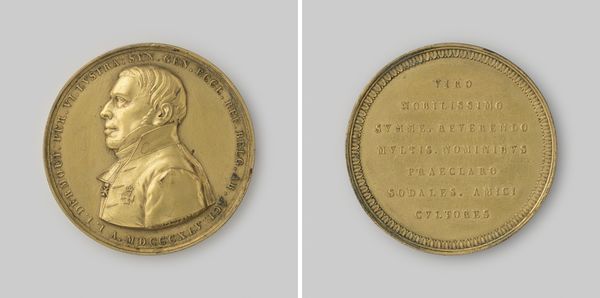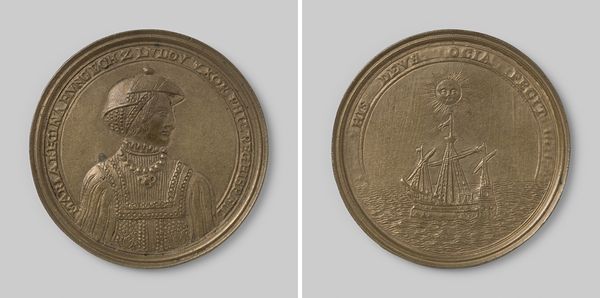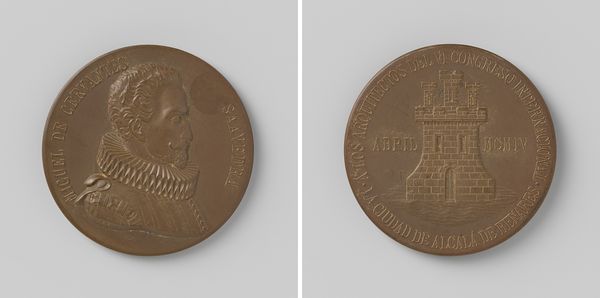
Opening van de spoorlijn Verviers-Aken, ter ere van Leopold I, koning der Belgen 1843
0:00
0:00
laurentjosephhart
Rijksmuseum
metal, relief, bronze, sculpture
#
portrait
#
neoclacissism
#
metal
#
relief
#
bronze
#
sculpture
#
history-painting
Dimensions: diameter 7.3 cm, weight 227.40 gr
Copyright: Rijks Museum: Open Domain
Editor: So, this bronze relief is a commemorative medal from 1843, celebrating the opening of a railway line by Leopold I. It’s currently held at the Rijksmuseum. The precision in the molding of the details is really something. What stands out to you about this object? Curator: I am drawn to its materiality. Bronze, a metal forged through labor, becomes a vehicle to glorify industrial progress. We must consider how such a medal—ostensibly commemorating advancement—functions as an object of social and economic forces. Editor: How so? Curator: The medal becomes a consumable item that disseminates an official narrative. It's a representation, but it is produced, distributed, and held, by real individuals within their economic environment. Each step in production speaks volumes about contemporary industrial capabilities and ideological frameworks. Notice the detail in Leopold’s uniform, contrasting sharply with the more allegorical figures on the reverse. What does that say about the perceived value of royal authority versus the workers and resources which underpinned industrial achievements? Editor: That’s an interesting contrast. The uniform is almost mass-produced, standardized, whereas the other imagery attempts at a timeless representation… Curator: Precisely! And the choice of bronze? Think of its durability. This wasn't just about remembering an event; it's about creating a tangible piece of propaganda destined to last. Consider its method of creation: how many hands, skills, technologies were necessary for each stage? This sheds a different light on the supposed glories celebrated on the medal’s surface, doesn't it? Editor: It definitely changes my perspective, shifting the focus to production. Curator: Material analysis is about revealing power dynamics and the lives interwoven with the object's creation, circulation, and consumption. It's never only about what’s depicted but about how things came into being. Editor: I hadn’t considered how the metal itself and its manufacture is telling its own history, a really valuable way to consider these objects. Curator: Exactly! Let us never divorce artwork from the conditions that create them.
Comments
No comments
Be the first to comment and join the conversation on the ultimate creative platform.
